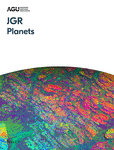Blanco-Sanchez M; Moore Michael J; Ramos-Munoz M; Pias B; Garcia-Fernandez A; Prieto M; Plaza L; Isabel I; Escudero A; Matesanz S. Phylogeography of a gypsum endemic plant across its entire distribution range in the western Mediterranean. American Journal of Botany, Early View, March 2021. DOI: 10.1002/ajb2.1625
Conclusions of this research, from the abstract: "Lepidium subulatum diverged from its nearest relatives similar to 3 million years ago, and ITS and psbA/matK trees supported the monophyly of the species. These results suggest that both geological and climatic changes in the region around the Plio-Pleistocene promoted its origin, compared to other evolutionary processes... Despite being an edaphic endemic, Lepidium subulatum possesses high genetic diversity probably related to its relatively old age and high population sizes across its range. Our study highlights the value of using different markers to fully understand the phylogeographic history of plant species."Wednesday, March 31, 2021
Thursday, March 25, 2021
Co-authors He Ren '20, Jane Sedlak '19, and Matthew Elrod publish in Environmental Science and Technology
This latest article from alumni Ren and Sedlak, former research students in the Elrod lab, describes a method "that allows for the study of the reaction of sulfate radicals and several olefinic precursors."
From the abstract:
Friday, March 19, 2021
New Publications from Matt Elrod, Oberlin alumni, and Aaron Goldman
Elrod, Matthew J., Professor of Chemistry; Jane A. Sedlak (OC '19); He Ren (OC '20). Accurate Computational Model for the Hydration Extent of Atmospherically Relevant Carbonyls on Aqueous Atmospheric Particles. ACS Earth and Space Chemistry 2021, 5, 348-355. (full-text access through Interlibrary Loan)
Goldman, Aaron D., Associate Professor of Biology; Liberles, D. A. The Journal of Molecular Evolution Turns 50. Journal of Molecular Evolution. DOI: 10.1007/s00239-021-10000-w, Early Access, Feb. 2021.
Thursday, March 04, 2021
Kevin Woods publishes in Semigroup Forum; Aaron Goldman in Journal of Molecular Evolution
Bogart, T., Goodrick, J. and Woods, Kevin (Professor and Chair of Mathematics). Periodic behavior in families of numerical and affine semigroups via parametric Presburger arithmetic. - Semigroup Forum DOI: 10.1007/s00233-021-10164-3 (Early access; no volume or pagination available) Subscriber access at publisher's website (SpringerLink)
Goldman, Aaron. D. (Associate Professor of Biology) and Kacar, B. Cofactors are Remnants of Life's Origin and Early Evolution. - Journal of Molecular Evolution DOI: 10.1007/s00239-020-09988-4 (Early access; no volume or pagination available) Free full text at publisher's website (SpringerLink)
Monday, March 01, 2021
From LEED office buildings to Mars rover: new publications from John Scofield and Christina Smith
Recent publications from John Scofield, Professor of Physics, and Christina Smith, Visiting Assistant Professor of Physics, as reported in Web of Science
Scofield, John H., Brodnitz, S., Cornell, J., Liang, T. and Scofield, T. 2021. Energy and Greenhouse Gas Savings for LEED-Certified US Office Buildings. Energies.
From the abstract: [Here]we present results from the largest study of measured, whole-building energy performance for commercial LEED-certified buildings, using 2016 energy use data that were obtained for 4417 commercial office buildings... Only LEED offices certified at the gold level demonstrated statistically significant savings in source energy and greenhouse gas emissions as compared with non-LEED offices.
Energies is a peer-reviewed, open access journal from MDPI, "a pioneer in scholarly open access publishing".
Smith, Christina L., Lemmon, M., Moores, J. E., et al. 2020. The Line-of-Sight Extinction Record at Gale Crater as Observed by MSL's Mastcam and Navcam through similar to 2,500 Sols. Journal of Geophysical Research-Planets 125: e2020JE006465.
From the abstract: [Finding based on monitoring by Mars rover Curiosity]... Extinction as a function of azimuth and elevation angle were investigated and the extinction as a function of azimuth was generally found to be smooth and thus the dust well-mixed horizontally. The extinction as a function of elevation shows increased dust loading at lower elevations during dusty seasons, indicative of dust lifting from the base of the crater.
JGR-Planets is one of dozens of journals published by the American Geophysical Union, accessible in the Wiley Online Library.





